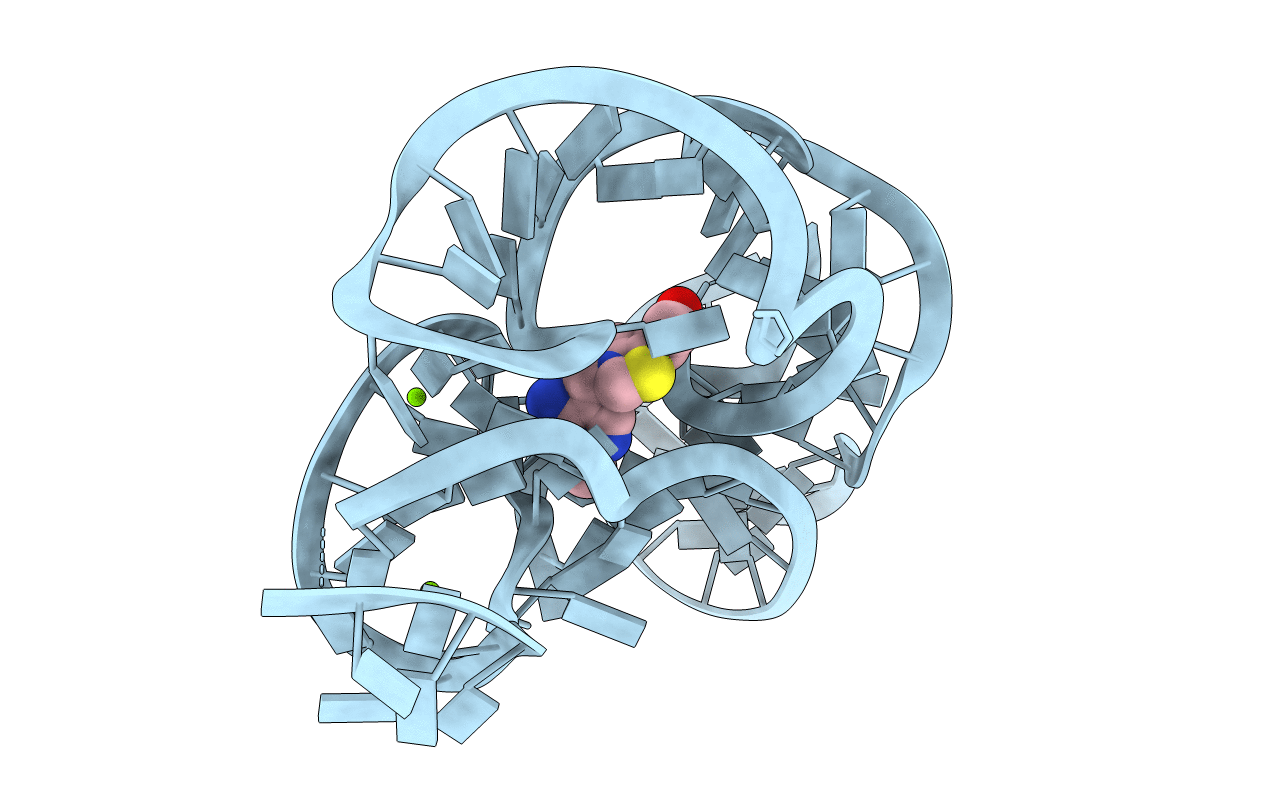
Deposition Date
2021-12-30
Release Date
2022-02-16
Last Version Date
2023-10-18
Entry Detail
PDB ID:
7TD7
Keywords:
Title:
Crystal structure of an E. coli thiM riboswitch bound to thiamine, manganese ions
Biological Source:
Source Organism:
Escherichia coli (Taxon ID: 562)
Method Details:
Experimental Method:
Resolution:
2.95 Å
R-Value Free:
0.28
R-Value Work:
0.22
R-Value Observed:
0.23
Space Group:
P 32 1 2


